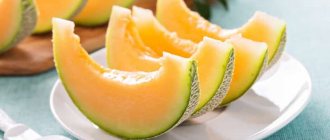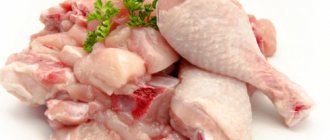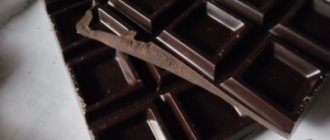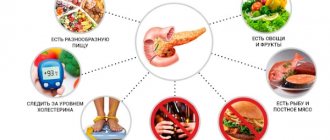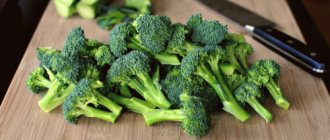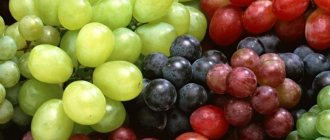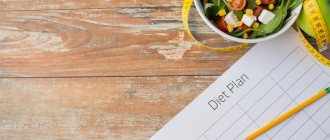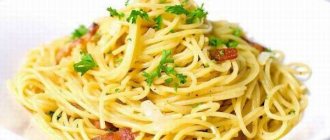Flour products are prohibited for pancreatitis and cholecystitis. Gastroenterologists consider them harmful to the inflamed pancreas. But bread is different.
Not all types of flour products are harmful. Some, on the contrary, may be useful even for people on a diet. So, are bread and flour allowed for pancreatitis or not? And if so, what types are acceptable?
Is it possible or not?
Pancreatitis is inflammation of the pancreas. The pathological condition is characterized by difficult digestion as a result of impaired functionality of the pancreas. As a result of the inflammatory process, the production of special enzymes necessary for complete digestion is reduced. The treatment course for pancreatitis includes a strict diet, with the exclusion of certain foods and limiting the amount allowed.
For the first two weeks after an acute attack of pancreatitis, patients are prescribed fasting; gradually, easily digestible foods are introduced into the menu in small portions, including bread. Bread is an important product for the body, and its role is especially important during a strict diet, since it helps replenish the body with necessary substances after therapeutic fasting.
It is best to include gray bread made from second-grade flour in the menu of a patient with pancreatitis. If you have a problem with the pancreas, it is also recommended to eat diet bread, rice cakes, and Armenian lavash.
It is important to follow the basic rules for choosing and eating bread if you have problems with the pancreas, which will allow you to enjoy delicious varieties of dietary bread without harm to your health.
The benefits of bread
It is almost impossible to imagine a daily diet without bread. The calorie content and composition of bread differs, depending on the type of flour and type of flour products. However, all types of bread contain vegetable proteins, fats, amino acids, vitamins, carbohydrates, fiber, biotin, tryptophan and a number of other useful trace elements and minerals. Bread made from first grade wheat flour has 266 kcal and contains 2.4 g. Fat, 53.4 gr. Carbohydrates and 77.7 g. Belkov. Rye bread (224 kcal) contains 4.7 g. Belkov, 0.7 gr. Fat and 49.8 g. Carbohydrates. Eating 300 g of bread daily provides the norm of amino acids, proteins and carbohydrates for an adult body; adolescents need to consume 400 g of bread per day, children - from 120 to 300 g, depending on age.
Refusal of bread can lead to bowel dysfunction, because bread contains the most fiber, which improves intestinal function. And if it is not taken for a long time, intoxication of the body may occur.
Bread has high nutritional properties, is actively digested even with problems with the digestive tract, and is easily and seamlessly accepted by the gastrointestinal tract.
What kind of bread is good for pancreatitis?
Bread is included in the diet of a patient with pancreatitis 20 days after an acute attack, when remission is observed. You should start with small pieces of stale bread or, better yet, crackers.
Even during a period of stable remission, you should only use stale bread, preferably crackers, which are great for pureed soups or herbal teas. The consumption of freshly baked bread is not allowed, due to the high concentration of starch and yeast unicellular fungi, which can cause fermentation and bloating in the stomach. When choosing bread, you should study the composition. It is not allowed to consume bread with emulsifiers, food additives, or dyes. It is also prohibited to consume butter products and baked goods with nuts, raisins, seeds, and prunes. Bread without yeast or made with a minimum amount of yeast is healthy. Preference should be given to wheat, bran, whole grain, rye and black bread.
Rusks and bagels in the diet for inflammation of the pancreas and gastritis
Nutritionists are most willing to allow crackers on the menu for pancreatitis. Of all types of baked goods, this is a good alternative to fresh bread without harm to damaged gastrointestinal organs. Even after acute poisoning, as with gastritis, it is allowed to drink black tea with crackers, especially black bread.
It is better to eat homemade crackers. Store-bought products may contain additives that are unnecessary for the pancreas. Black or wheat bread, preferably without yeast, is well suited for this. Thin briquettes or strips are dried for 5–10 minutes in a preheated oven and used when cooled. They can be added to soups, salads, and tea.
As for bagels, doctors recommend eating them only during periods of stable remission and buying them only in nutrition departments. Unfortunately, regular bagels are prepared with impurities, excess vanilla and other additives to create an attractive taste.
Rye bread for pancreatitis
For inflammation of the pancreas, it is recommended to use rye bread, since this variety activates the digestive tract, contains a small percentage of starch and is easily absorbed by the body. Rye bread is considered dietary, but nutritionists advise using it dried and in limited quantities. Fresh rye or, as it is also called, Borodino bread, has a sour taste, which is due to the presence of rye acid (hydrolysis class enzymes) in the composition. The component can cause an increase in the acidity of gastric juice, irritation and provoke an exacerbation of pancreatitis, which is why the best option for using this type of bread is crackers.
Black bread for pancreatitis
Black bread is baked from different types of rye flour. Used for cooking are sifted rye flour, wallpaper flour and peeled flour. Also, there are several types of rye bread - simple black bread, custard or Moscow bread.
The calorie content of black bread is lower than that of other baked goods. But this variety contains a large amount of useful substances, vitamins and minerals. The high content of vitamin B, which maintains blood sugar levels, makes it beneficial for diabetes. As is known, with pancreatitis there is a risk of developing diabetes mellitus as a result of enzyme deficiency. That is why many nutritionists recommend the use of black bread for pancreatitis, but in the form of crackers and in small portions.
Bread
- Bread is used for pancreatitis as a substitute for conventional flour products. They are sold in special departments of stores intended for dietary products. The technology for preparing yeast-free bread is adjusted to meet dietary requirements:
- no flavorings or fragrances are used;
- flour from various grains is soaked in barely salted water;
- The dough is rolled out into the thinnest sheets and dried in special ovens.
Adding buckwheat or rice flour to the product diversifies the taste of the bread.
You can eat bread with all dishes:
- with soups;
- as a side dish for fish or meat;
- crumble into salads.
The breads make delicious desserts if you coat them with honey.
White bread for pancreatitis
White bread is introduced into the menu of a patient with pancreatitis gradually, during a period of stable remission. The recommended bread is made from sifted flour of the first grade or with an admixture of wheat. Before use, pieces of white loaf should be dried in the oven to get rid of fiber and yeast that can cause fermentation, thus preserving carbohydrates that are beneficial for the body.
An alternative to white bread is Armenian lavash made from white flour, prepared without the use of yeast. Lavash should also be consumed in limited quantities, since the flour from which the product is made contains harmful starch and heavy carbohydrates. Oven-dried lavash is healthier. The loaf or pita bread is not allowed to be consumed immediately after being removed from the oven while warm. You must wait until the removed bread has cooled completely.
Crackers and bread
Almost all diets include the use of crackers on the menu. It is allowed to use crackers for gastritis, after acute intoxication, cholecystitis and for problems with the pancreas. You can make croutons from all existing types of bread, but croutons made from the black variety are especially useful.
The usefulness of crackers is due to the fact that they are easily digested, quickly absorbed by the body, do not contain starch and do not affect the fermentation process of gastric secretions.
For patients with digestive problems, it is best to eat homemade crackers that do not contain flavorings, dyes, seasonings and spices. Thin slices of gray bread, or products made from second-rate flour, can be cut into different shapes (slabs, cubes) as desired and placed in the oven at minimum temperature for an hour.
It is recommended to replace baked goods with pancreatitis with bread. You can buy the product in all stores, in the diet food department. The composition of the breads is carefully selected, which allows them to be used without risk to health. The advantage of this type of bread is that it does not contain flour from different varieties, as well as dyes, flavors and flavor enhancers. Eating bread allows you to replace your daily intake of baked goods. To prepare these breads, flour from various cereal crops is used. Basically, such bread is baked on the basis of buckwheat flour (for diabetics) and on the basis of rice flour (to stabilize the gastrointestinal tract during diarrhea).
Since the composition of the product is balanced, it can also be used during an exacerbation of pancreatitis, thus replenishing the patient’s diet with useful substances and preventing the risk of developing stool disorders.
With bran
Bran bread causes a lot of controversy among nutritionists. On the one hand, the product is not recommended for those who suffer from pancreatitis or cholecystitis. On the other hand, bran bread has good sides:
- bake it with a minimum amount of salt;
- Bran contains calcium, iodine and other necessary elements.
The disadvantages of bran for pancreatitis include:
- starch and fat content;
- when fresh, it is difficult for the stomach to digest;
- overload the pancreas with the production of hydrochloric acid.
Conclusion: in order to reduce the risk and not overstimulate peristalsis with roughage (which, of course, is bran), this type of bread is consumed exclusively dried. Thin croutons are made from it and served along with puree soups (4-6 croutons each). And during periods of exacerbation of pancreatitis, they are temporarily abandoned.
Whole grain product
Whole grain bread is considered one of the healthy types. Such bread is endowed with the same beneficial qualities and properties as products made from rye flour, but at the same time has a positive effect on the acidity of gastric juice. However, whole grain bread contains a lot of solid particles, unmilled grains, interspersed seeds, sesame and raisins, which is not recommended in the acute phase of inflammation of the pancreas, since it is difficult for the body to digest and can cause severe pain. The product is allowed to be introduced into the diet of a patient with pancreatitis only on the 8th day after the end of therapeutic fasting. You are allowed to eat bread in small pieces, carefully monitoring the individual reaction of the body. You are allowed to consume no more than 200 g of bread of this type per day, dividing the total portion into several doses.
Wholegrain
Whole grain bread can have a beneficial effect on the gastrointestinal tract:
- remove bile, toxins, cholesterol and radionuclides well;
- normalize the biochemical composition of pancreatic juice;
- restore intestinal microflora.
Whole grain bread is one of the first types of bakery products that begin to be added to the patient’s diet. Scheme for adding a product to the menu:
- After 1–2 weeks of fasting after an attack of pancreatitis, you are allowed to try crackers made from whole grain bread.
- The first days the daily norm does not exceed 100 grams.
- After a few more days, the volume of whole grain crackers increases to 200 grams.
And during the period of remission, the pancreas responds normally to small slices of regular whole grain bread. But not fresh baked goods, but yesterday’s cooking.
Bran bread
Bread with bran can only be included in the menu of a patient with pancreatitis during a period of stable remission, since bran is a fairly coarse food additive that is almost not digested by the digestive tract, and causes increased peristalsis of the stomach and intestines. Such stimulation also negatively affects the pancreas, the excessive load of which during the period of dysfunction is strictly contraindicated.
Nutritionists recommend eating bran bread in a dried form, first cutting it into small pieces. In the form of crackers, bread is more easily digestible and supplies the body with useful substances without causing gastrointestinal disruption. It is recommended to use dried bran bread with pureed soups, pureed soups, and herbal teas. You can eat a maximum of 4 crackers per day.
Baranki
Dryers and bagels for pancreatitis are an approved and useful product. Bagels contain a significant amount of B vitamins, as well as vitamins PP, H and microelements necessary for the body of children and adults. Products entering the body become a source of easily digestible proteins and carbohydrates. Unlike other types of bread, they do not cause flatulence, bloating, and are not a burden on the digestive tract.
It is important that the bagels used are not made from butter dough and do not have any additives. The product should be consumed in limited quantities to avoid constipation and weight gain.
Bagels and dryings can be added to the diet 3 weeks after an acute attack of pancreatitis; the use of products should be combined with low-fat fermented milk products, soups and rosehip decoction.
Homemade bread recipe
It's no secret that everything prepared at home, with your own hands, is healthier and tastier. This is why it is recommended to prepare bread at home. This bread is harmless to the digestive system and does not contain components hazardous to health. Homemade bread may only be consumed the day after baking.
The recipe for homemade bread is simple. You need to take 2.5 cups of second-grade flour or rye, 11 g of dry yeast, 1.5 tsp. Salt, 1 tbsp. L. Sugar, a glass of boiling water and the same amount of vegetable oil. Yeast and sugar need to be dissolved in boiling water and allowed to stand for a while. Then you need to add salt to the composition and mix. You need to add a ready-made mixture of yeast, salt and sugar to the flour, adding oil little by little. You need to knead the dough until it comes off your palms. The resulting mass is placed in a warm place. When the dough has risen, knead again and wait another 15 minutes. Then put in a mold and bake at 200 degrees for 40 - 50 minutes.
You can prepare homemade bread according to another recipe, without kneading. You need to take 10 g of yeast, 1.5 cups of warm boiling water, 0.5 kg of wholemeal flour, 1.5 tsp of salt. You need to dilute the yeast with water and salt, add flour and mix. Leave the dough alone, cover the top and place in a warm place for 2 hours. When the mass of the dough triples, it needs to be flattened on the table using flour, rolled into a flat cake, folded into an envelope shape and baked in an oven preheated to 200 degrees for 50 minutes.
Alternative
Another common alternative is bread. This yeast-free dough made from various grains is baked into thin sheets.
At home, it is easy to prepare an alternative to bread - dietary flatbreads made from rice or buckwheat flour. They are very easy to prepare at home: mix one glass of rice or buckwheat flour with ½ glass of boiled water and 1 tbsp. l. olive oil. You can add a pinch of salt. It is convenient to bake even in a frying pan (lightly greased with olive oil), like pancakes.
Good to know: buckwheat cakes are good for diabetics, and rice cakes are good for those who suffer from frequent diarrhea.
Warning: to prepare homemade breads and flatbreads for inflammation of the pancreas and cholecystitis, do not use flour from barley porridge, oatmeal, corn, peas or beans.
You can also replace bread with sesame seeds. A small amount of grains is sprinkled onto soups and vegetable salads.
Contraindications
Each type of bread has certain contraindications. White bread, entering the stomach, causes fermentation with the release of a large amount of gases, and therefore it is not recommended to be consumed for constipation, dysbacteriosis, peptic ulcers, and diabetes. The product leads to blood thickening and promotes the development of varicose veins; it is not recommended to use it for atherosclerosis, thrombosis, or cardiovascular diseases.
For women expecting the birth of a child, white bread is not recommended, since its consumption leads to swelling of the birth canal and early hardening of the fetal head.
It is not recommended to use black bread for:
- Infections and gastrointestinal disorders;
- High acidity of gastric juice;
- Heartburn;
- Gastritis and ulcers;
- Diseases of the gallbladder and liver.
If you have these ailments, you need to replace black bread with stale white bread on a yeast-free basis.
Whole grain bread should not be used if:
- Increased acidity;
- Stomach ulcer;
- Enterite;
- Cholecystitis;
- Pancreatitis;
- Adhesions in the intestines;
- Acute gastritis.
Bread with bran should not be included in the diet if:
- Hemorrhoids;
- Colitis;
- Stomach ulcers;
- Acute phases of gastrointestinal diseases.
Lavash for pancreatitis. Main causes of the disease
The main causes of this disease are the abuse of alcoholic beverages or various disorders of the gallbladder.
Experts also note a number of risk factors:
- duodenal diseases;
- traumatic abdominal injuries;
- cholangiopancreatography of the endoscopic retrograde variety;
- side effect from taking certain medications;
- infectious lesions;
- infestations of parasitic species;
- anomalies of the anatomical nature of the gland ducts;
- various metabolic disorders;
- diseases of the body's vascular system;
- influence of hereditary factors.
Bread in the acute phase of pancreatitis
Bread is a storehouse of useful elements and substances that are necessary for the patient’s body, weakened by fasting and a strict diet, in the acute phase of pancreatitis. Bread is introduced into the diet immediately after fasting (approximately 15–20 days). During this period, eating bread made from white flour (wheat) is not allowed. In order to prevent a stimulating effect on secretion, it is recommended that the patient be given only yesterday's bread or a dried product. Rye (black) bread and all varieties of whole grain bread are strictly prohibited during this period, since these types of bread accelerate the formation of proteolytic enzymes that destroy the tissue structures of the pancreas. The negative impact of these types of bread is that their consumption causes the intestines to contract much faster, leading to the development of diarrhea and severe pain, and also cause bloating and flatulence.
Upon the onset of stable remission, the patient is allowed to eat yesterday's white bread and products made from second-grade flour. In the later stages of dietary rehabilitation, it is allowed to consume no more than 100 g of rye bread per day.
Bread is an important part of the human diet; for patients with pancreatitis, this product is also indispensable due to its rich composition. If you have digestive problems, you should eat only approved types of bread in limited quantities.
Remission period
During the quiet stage, the variety of varieties of baked goods expands. For example, daily second-grade white bread with low gluten content is allowed. It is allowed to consume whole grain products containing fiber, which helps lower cholesterol, eliminate toxins, prevent constipation, and improve the properties of bile. It would not be amiss to add dietary bread to your diet, exclusively wheat bread with the addition of cereals.
At the end of dietary rehabilitation, it is allowed to consume black bread made from seeded or peeled flour, up to 100 grams per day. It is important that the structure of the product is not rough, which has a negative impact on digestion.
Bakery lovers do not need to give up the product completely. With pancreatitis, it is not forbidden to eat bread from the approved varieties in accordance with the diet. If you follow the recommendations and rules, bread will not worsen your health by causing an aggressive reaction of the pancreas; on the contrary, it will serve as a source of energy.
